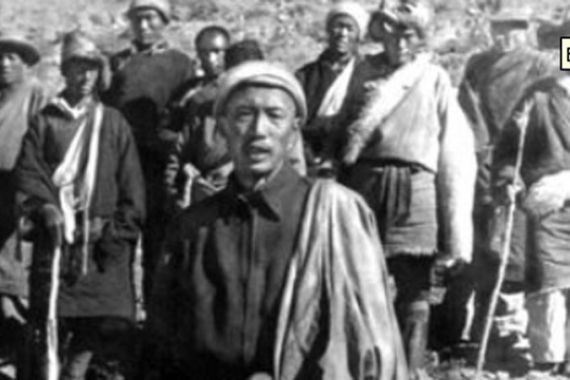
‘Buddha’s warriors’
The Khampa resisted China’s occupation of Tibet in a long and bloody conflict before being forced to surrender in 1974.
 |
| The Khampa warriors fought to defend Tibetan culture and traditions against the Chinese communist state |
The Khampa warriors were members of a Tibetan armed group which fought against China’s occupation of Tibet from the 1950s until its downfall in 1974.
Also called ‘Buddha’s warriors’, the group’s main aim was to defend and preserve the Tibetan way of life after communist China invaded the western region in 1950, razing the monasteries in eastern Tibet in 1956.
Initially forced into an uneasy compromise with Beijing, the Dalai Lama fled to India in 1959, and the local Khampa tribesmen revolted, forming a resistance movement, which employed mainly guerilla tactics against the Chinese army.
The prospect of communism spreading across South-East Asia raised genuine concerns in Washington and the US Central Intelligence Agency (CIA) decided to organise a covert military project inside Tibet. The Khampa’s moments of success against China led the CIA to back the group with arms drops, funding and training in guerilla warfare from the late 1950s until 1969.
With the agreement of the king, they set up their base camps in the then-kingdom of Mustang, a remote Himalayan region bordering Tibet. But life was hard for the guerillas and, while many people in Mustang welcomed them as fellow Tibetans, there was not enough food to go around and it has been said that many Khampa were reduced to boiling their shoes to eat.
Ngawang Tsultrim, a former Khampa who secured the Dalai Lama’s route out of Tibet 50 years ago, says: “We were able to fight so hard because we were fighting for Tibet. The Tibetan people had lost their freedom. They were enduring many hardships. And we wanted to go return to Tibet. That was why we fought so hard.”
Despite the hardships and the political and military pressure from both China and Nepal, the armed group did succeed in temporarily taking control of large areas of Tibet during the territorial conflict.
But in 1969, the CIA abruptly cut off all forms of support for the Khampas, explaining that it was a pivotal condition of establishing diplomatic relations with the Chinese government.
Thinley Paljor, a former Khampa fighter, was among the thousands who felt that the US had betrayed their cause.
“We felt deceived, we felt our usefulness to the CIA is finished. They were only thinking short-term for their own personal gain, not for the long-term interests of the Tibetan people,” he reportedly said.
In 1974, under pressure from the Chinese, the Nepalese government sent troops into Mustang to demand the surrender of the Khampa. The Dalai Lama, seen as the ultimate authority in Tibetan Buddhist culture, sent the fighters a taped message asking them to lay down their arms so as to spare themselves a bloody confrontation.
Most of the fighters accepted the Dalai Lama’s request. But some instead chose to commit suicide rather than disobey their spiritual leader or face dishonour by surrendering. General Wangdu, the last leader of the guerilla fighters, was murdered in 1974 – marking the end of the resistance movement.
“We didn’t encourage them to kill themselves. They did it of their own will. They weren’t crazy,” remembers Ngawang Tsultrim.
Today, some of the survivors of the resistance force live in two refugee settlements in Nepal, where they scrape out a living spinning wool for use in Tibetan carpets. Many of them say they prefer to live this way, where they can practice their religion freely, rather than to live in Tibet under Chinese rule.